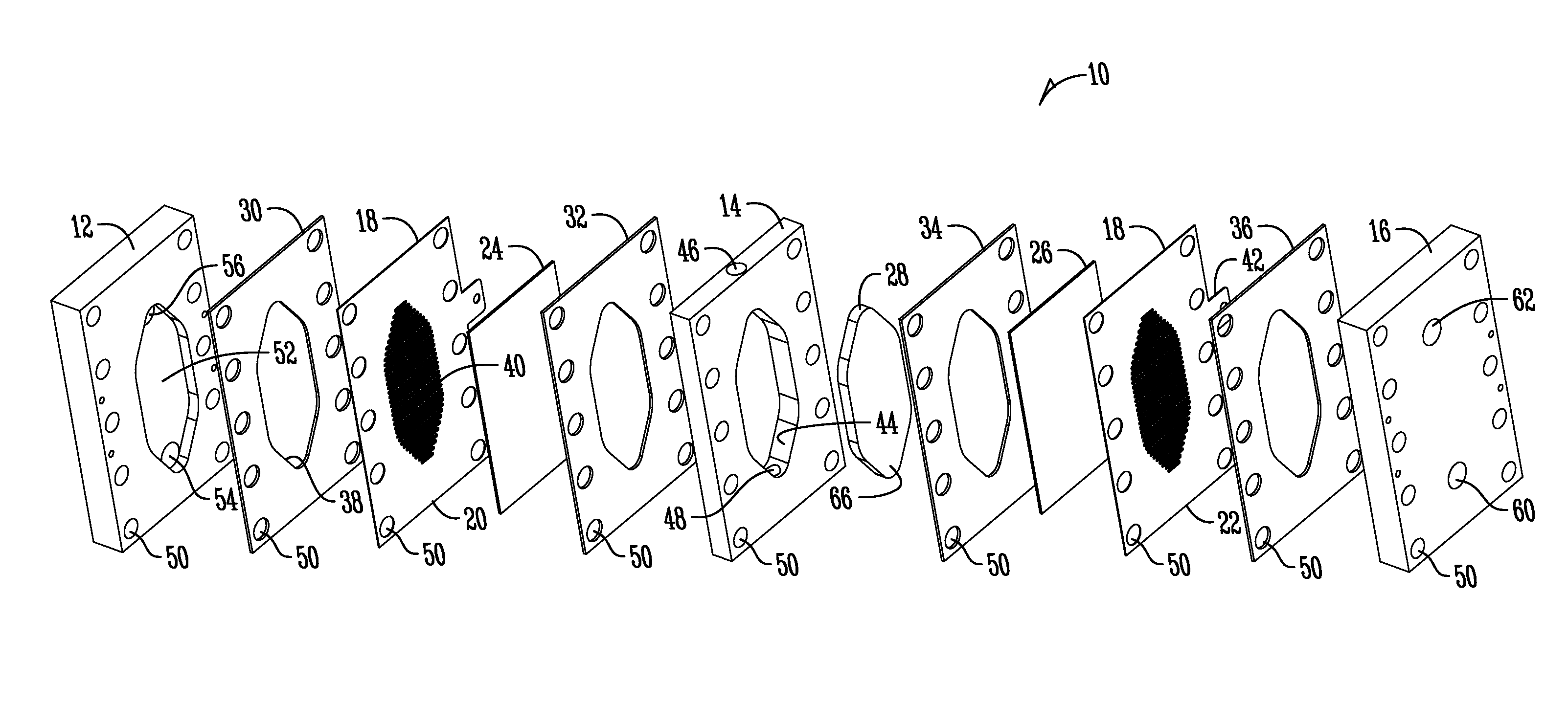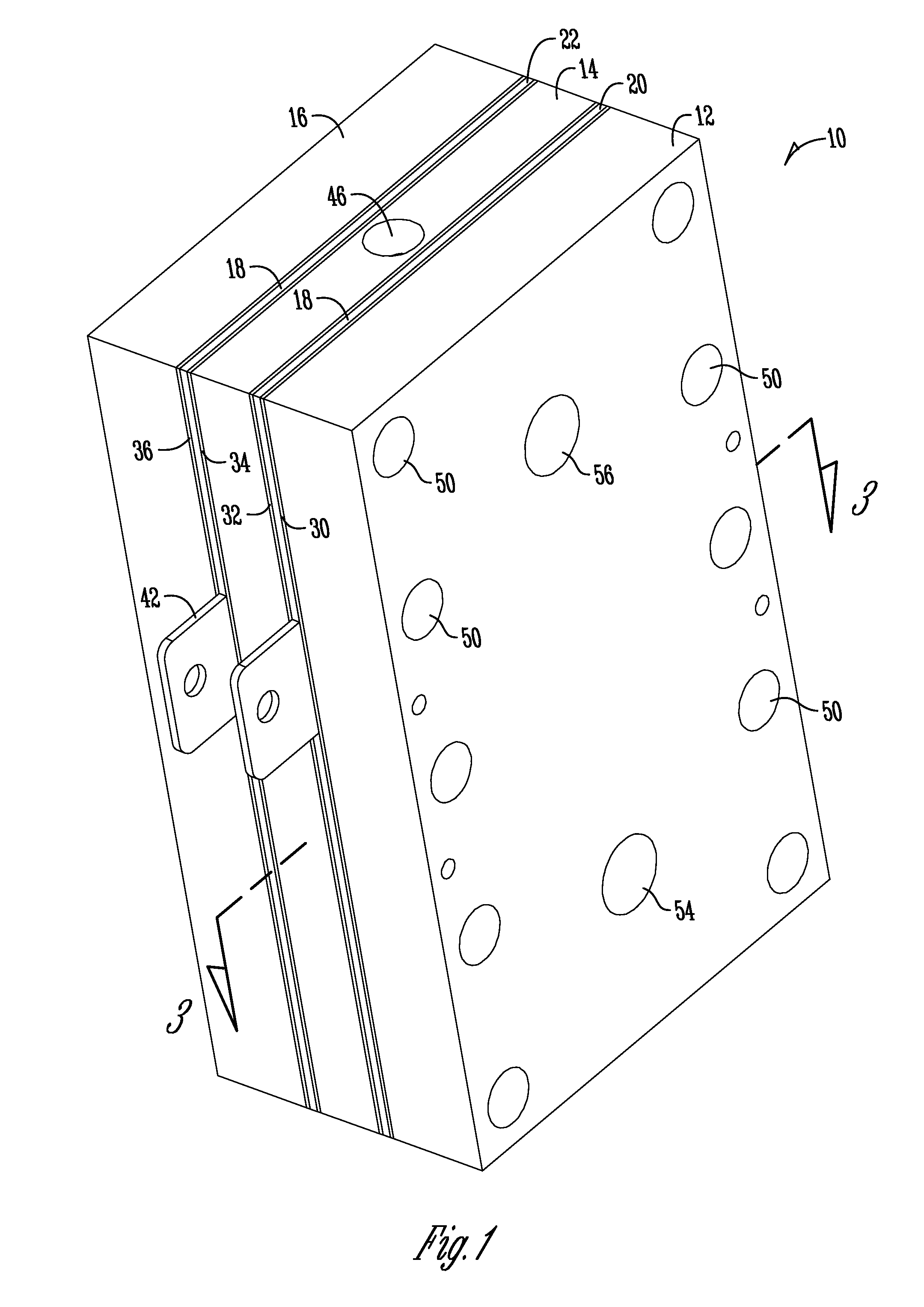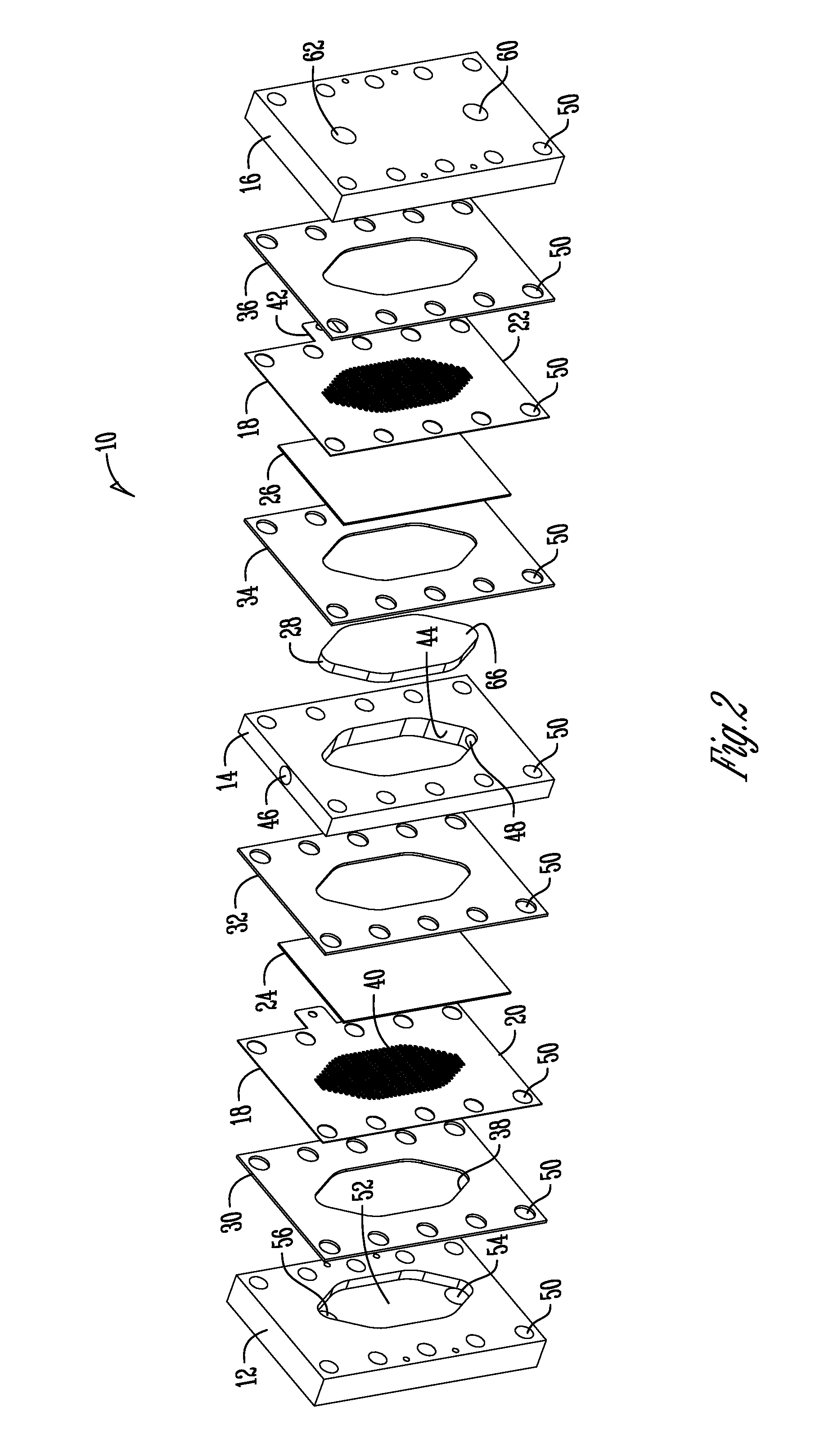Support of ion exchange membranes
a technology of ion exchange membrane and support system, which is applied in the direction of electrolytic organic production, instruments, electrolysis components, etc., can solve the problems of affecting the stability of the electrolytic cell, so as to improve the support, reduce the voltage, and uniform the effect of ions flux
- Summary
- Abstract
- Description
- Claims
- Application Information
AI Technical Summary
Benefits of technology
Problems solved by technology
Method used
Image
Examples
example 1
[0061]Exploratory testing of a support member according to the invention was conducted using a nonwoven polypropylene material. The polypropylene material was a two layer nonwoven fabric that was hand-cut. Each layer of the material was about 0.375 inches in thickness and added to the intermediate chamber of a three-chambered electrolytic cell to analyze efficacy in membrane support. The material provides about 1.8 lb / yd2 density and was obtained from McMaster-CARR (PN 88125K999) (originally manufactured by Buffalo Felt (West Seneca, N.Y.).
[0062]The electrolytic cell housing the support member demonstrated improved operating efficiency. In particular, the electrolytic cell operated at a lower, acceptable voltage.
example 2
[0063]Longer duration testing of a support member comprised of a nonwoven polyester material was conducted. The duration testing analyzed a support member made of a nonwoven polyester material with a rectangular PVC housing as shown in the Figures. The polyester material was a two layer nonwoven fabric that was die-cut and added to the intermediate chamber of a three-chambered electrolytic cell to analyze efficacy in membrane support. Each layer of the material was about 0.375 inches thick and provided about 2.25 lb / yd2 density and was obtained from Grainger (PN 2HVC3) and manufactured by Superior Felt and Filtration (Ingleside, Ill.). The electrolytic cell operated on a catholyte recycling mode (about 84 ml / min flow rate supply). The current was constant at 7.2 Amps with operation constantly from Monday-Friday (cell flushed and turned off over weekends).
[0064]The cell was disassembled and analyzed after 100 hours of operation and at 480 hours of operation. Results demonstrated that...
example 3
[0066]Material Compatibility Testing of Support Members. Various support member substrates were analyzed to determine compatibility with electrolysis solutions (namely bleach solutions). The following substrates and conditions were tested (shown in Table 1):
[0067]
TABLE 1MaterialSolutionTreatmentMeasurementsPolypropyleneAcidifiedCompressed 30%ThicknessNonwovenSalt Brine(PVC Blocks)ElasticityPolypropyleneAcidifiedUncompressedThicknessNonwovenSalt Brine(Glass Jars)ElasticityTOCPolyesterAcidifiedCompressed 30%ThicknessNonwovenSalt Brine(PVC Blocks)ElasticityPolyesterAcidifiedUncompressedThicknessNonwovenSalt Brine(Glass Jars)ElasticityTOC
[0068]Support member samples were 1.5 inch diameter circles cut from the tested material / fabric. Both materials were about 0.375 inch (nominal) thickness at a density of 2.25 lb / yd2. The polypropylene material was obtained from McMaster-CARR (PN 88125K999), Manufactured by Buffalo Felt. The polyester material was from Grainger (PN 2HVC3), Manufactured b...
PUM
| Property | Measurement | Unit |
|---|---|---|
| thickness | aaaaa | aaaaa |
| thickness | aaaaa | aaaaa |
| thickness | aaaaa | aaaaa |
Abstract
Description
Claims
Application Information
 Login to View More
Login to View More - R&D
- Intellectual Property
- Life Sciences
- Materials
- Tech Scout
- Unparalleled Data Quality
- Higher Quality Content
- 60% Fewer Hallucinations
Browse by: Latest US Patents, China's latest patents, Technical Efficacy Thesaurus, Application Domain, Technology Topic, Popular Technical Reports.
© 2025 PatSnap. All rights reserved.Legal|Privacy policy|Modern Slavery Act Transparency Statement|Sitemap|About US| Contact US: help@patsnap.com



